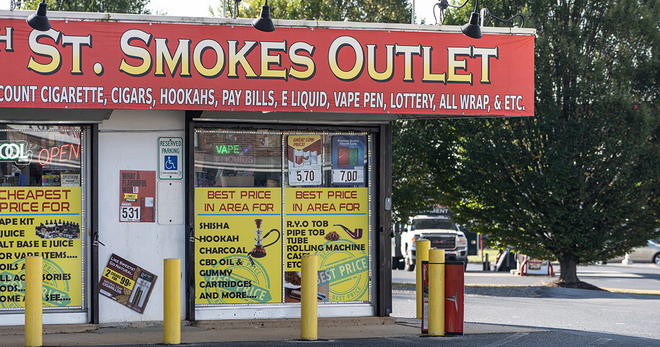Young adults living in vulnerable D.C. communities see more flavored tobacco marketing
Young people living in areas with lower incomes, higher proportions of racial/ethnic minorities, and higher smoking rates had more than seven times higher odds of being exposed to flavored tobacco marketing, according to a Truth Initiative study published in Annals of Behavioral Medicine. They also had 2.6 times higher odds of seeing any tobacco marketing compared to those living outside such communities, underscoring that where people live plays an important role in their exposure to tobacco advertising.
The findings, which show another way tobacco is a social justice issue, speak to the need to limit the number of tobacco retailers and tobacco ads in these areas to reduce health disparities that result from increased tobacco use. The tobacco industry has a long history of targeting tobacco marketing in vulnerable communities with high concentrations of Black and other minority residents and low-socioeconomic individuals.
Flavored tobacco ads ubiquitous among vulnerable communities
In the study, researchers texted participants to ask if their immediate surroundings included ads for tobacco products, including flavored products. Survey respondents included a total of 146 18-24-year-olds who weren’t currently using tobacco products and lived in Washington, D.C. – 20 of whom lived in vulnerable communities, defined in the study as those with high proportions of lower income and racial/ethnic minorities, and high smoking rates.
Not only did young people living in vulnerable communities in D.C. have higher odds (2.6x) of seeing any tobacco marketing, they also had 7.2x higher odds of exposure to flavored tobacco marketing compared with those not living in those communities. In fact, living in a vulnerable community was the strongest predictor of flavored tobacco marketing exposure among all factors examined.
Flavors – including menthol - play an important role in attracting youth and young adults to tobacco products because they are easier to start and more difficult to quit. More than four out of five young adults ages 18 to 24 who have ever used tobacco reported that their first product was flavored.
The history of Big Tobacco targeting vulnerable groups
Researchers credit these alarming trends to well-documented marketing tactics used by the tobacco industry to target vulnerable communities. The tobacco industry strategically and aggressively targeted the Black community for decades, especially with menthol cigarettes. Tactics include placing more advertising in predominantly Black neighborhoods and in publications that are popular with Black audiences. For instance, previous Truth Initiative research found that stores in predominantly black neighborhoods in Washington, D.C. were up to 10 times more likely to display tobacco ads than retailers in areas with fewer black residents. The current research indicates that targeted marketing in vulnerable communities persists today.
The authors write, “As a result [of marketing tactics], these vulnerable communities might have a higher density and proportion of retailers selling tobacco or a higher number of tobacco marketing materials per retailer, leading to their community members’ increased exposure to tobacco marketing regardless of their own individual risk factors for such exposure.”
Retail environments continue to be an important source of tobacco marketing exposure
Retailers deserve particular attention when it comes to where young people are being exposed most to tobacco marketing. The study also found that odds of tobacco marketing exposure were 17x higher in stores or retail locations and 4.1x higher outside or in transit compared to print, radio, or digital media while seen at home.
The authors acknowledge that although websites and social media have become an important source of tobacco marketing exposure for young adults, “point-of-sale retailers may still be the most prominent source of exposure for this group.”
Findings support policies that curtail tobacco retailer density and ads to reduce overall disparities in tobacco marketing exposure, according to the authors. “Tobacco control measures and policies that act to reduce the amount of tobacco marketing particularly among vulnerable communities with high concentrations of Black residents and individuals with low-socioeconomic statuses are greatly needed,” the authors write.
More in tobacco industry marketing
Want support quitting? Join EX Program
By clicking JOIN, you agree to the Terms, Text Message Terms and Privacy Policy.
Msg&Data rates may apply; msgs are automated.


